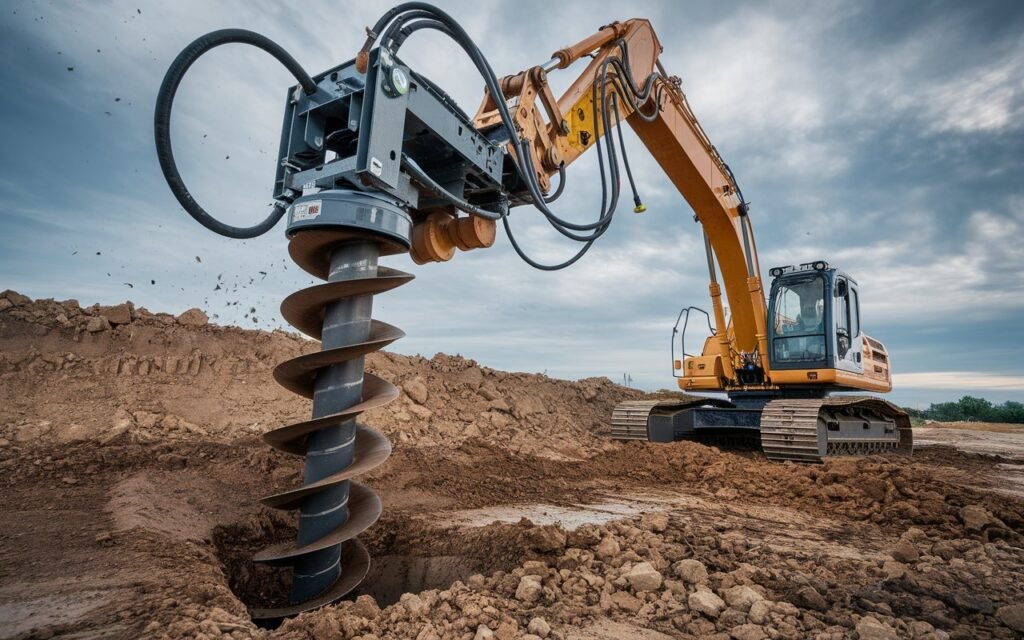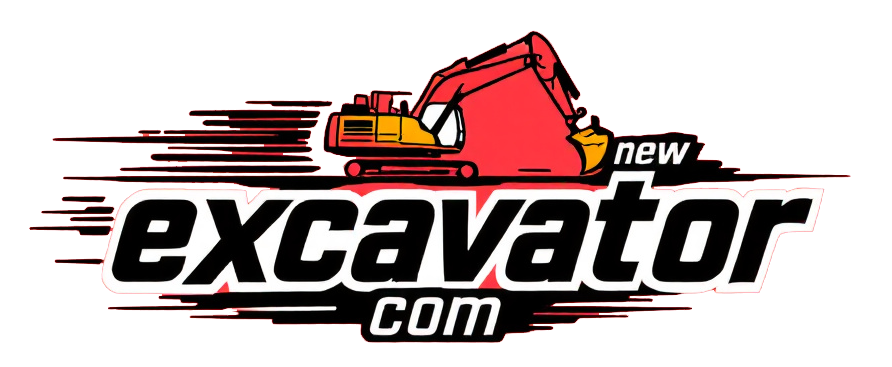
Introduction
In gardening, building, and agriculture as well as construction, accuracy and efficiency rule. Planting trees, putting barrier posts, and building foundation docks now all depend on hydraulic auger drill attachments. They operate on many different grounds and soils.
Features and Benefits
- Versatility:Attachments for hydraulic augers are really handy. They do varied jobs, vary in size, and mix nicely with machinery. Every job, from building foundation docks to excavating holes for barrier posts, has an attachment.
- Efficiency: Comparatively to hand work or a backhoe, hydraulic augers are quicker and less expensive. They are quick and effective, have the minimal staff needed to cut across various soil types, and spin with enough force.
- Precision: Good accuracy is given by hydraulic augers. Particularly in the proximity of services and buildings, the direction and depth spacing of holes are under operator control, therefore enabling accurate hole placement.
- Durability:Made strong and resistant to heavy use, hydraulic augers are Less maintenance expenses and a longer lifetime follow from this as well.
How to Choose Your Hydraulic Auger Drill Attachment
The right hydraulic auger is important to optimal hydraulic auger performance. Here are the main factors to keep in mind:
Size and Compatibility
Check that the attachment is compatible with your equipment. Make sure it checks the hydraulic flow rate (GPM) and pressurized requirements to make sure it works well.
Soil Conditions
Different soils require different lengths of auger bit and torque levels. Sandy soil needs less torque, hard rocky soil is higher, and both need carbide-tipped bits.
Maintenance and Safety
Make sure you choose hard-wearing attachments backed by hardened steel. You should look for features that prevent accidents, like automatic shutoffs.
Tips for the Usage and Maintenance
Usage and maintenance can increase your hydraulic auger’s lifespan and keep it operating safely.
Operating Tips
- Follow Guidelines: Use the manufacturer’s instructions for your attachment.
- Adjust Torque and Speed: We set these based on the soil conditions to avoid damage and make them more efficient.
- Secure the Bit: Start without checking that the auger bit is tightly in place.
Maintenance Tips
- Inspect Often: Before and after using, check teeth on bolts and hydraulic fittings.
- Lubricate Parts: grease pivots and joints to ensure that they work smoothly.
- Clean After Use: Prevent the rust by removing soil and debris.
- Stick to a Schedule: Have professional servicing handle the wear on the hydraulic motor and other parts.
How Do They Work?
The attachments feature the hydraulic system of the host machinery. The auger is then cooperated by the hydraulic motor into a powered rotational movement that helps the drill bit to pierce into the ground. They can be adjusted to speed and torque according to projects, making them very good for many projects.
Common Uses
Hydraulic auger drill attachments are used for:
- Construction: working in foundation shafts, digging post holes, or retaining wall footings.
- Landscaping: planting trees, setting posts in the fence, or building irrigation systems.
- Agriculture: Prepping soil for crops and preparing fence lines.
Conclusion:
We need hydraulic auger drill attachments in construction, landscaping, and agriculture. They are efficient and versatile and save costs, so their investment is a great idea for professionals and hobbyists.
These tools would save you time, make things easier, and improve the work. Have you ever used a hydraulic auger drill attachment? Let me know how you experience them in the comments or email me to discuss how they can improve your projects!
Frequently Asked Questions (FAQs)
1. What part of hydraulic auger drill attachments are they used for?
Hydraulic augers drill holes in various soils. Commonly used in construction as foundations, in agriculture for fencing and planting, landscaping, and tree planting.
2. Selecting the right auger bit for a project,
Soil and job dictate what pile bit to use; it is the right bit. Carbide-tipped augers work best for dry or dense soil. Standard bits with lower torque are enough for use in soils like sand or clay, and more torque bits are unnecessary. Make sure to always check your project needs and the manufacturer’s recommendations.
3. Can hydraulic augers operate in extremely adverse conditions?
They can operate in the cold or the hot and are also built for longevity. Under severe conditions, one should give regular maintenance top priority. Usually, lubricate and look to prevent heat or freezing damage.
4. How do you use a hydraulic auger safely?
In terms of safety, follow manufacturer directions. Put on PPE, fast mount the attachment, and keep at the advised torque and speed ranges. Clear any obvious hazards in the vicinity to protect onlookers.
5. How can I resolve the most common problems?
Usually, a hydraulic defect, worn teeth, or loose fittings causes issues including low efficiency or unusual noises. Examine the attachment, replace the damaged components, and note the maintenance plan. If you have a continuous issue, you would be better off seeing a technician.
If you address these questions, you will safely and effectively operate hydraulic augers. If properly maintained, they increase their lifetime and performance.
